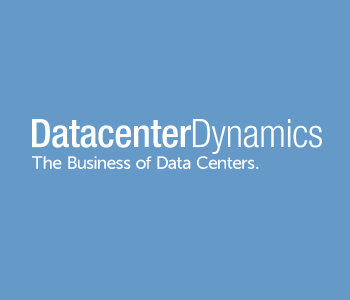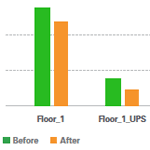 Datacenter Dynamics recently published an article that explored the future of machine learning in data centers, and featured quotes from Vigilent founder and CTO Cliff Federspiel and VP of business development and marketing Bob Thronson.
Datacenter Dynamics recently published an article that explored the future of machine learning in data centers, and featured quotes from Vigilent founder and CTO Cliff Federspiel and VP of business development and marketing Bob Thronson.
“Machine learning, a subset of artificial intelligence, is about to transform everything – if you believe breathless reports from the government and in the media,” the article begins. “It will change or replace the workforce, create new businesses, and revolutionize existing industries with new innovations, strategies and dangers. Data centers are standing by to provide a home where those AI systems will be trained and run. But how will the algorithms transform the data centers themselves? Machine learning promises to unlock efficiencies, but that will mean handing over control to the machines. Are we ready for that?”
Vigilent and Federspiel are featured in this excerpt:
DCIM company Vigilent also hopes to use machine learning to discover surprises within data centers, having embraced the technology more than eight years ago. The company uses machine learning to make predictions and then uses those predictive capabilities to “take actions automatically,” Vigilent’s founder and CTO, Dr Cliff Federspiel, told DCD.
“Some DCIM systems have the ability to use tools like computational fluid dynamics on the thermal side for making certain kinds of forecasts, but as far as I know, there isn’t really a whole lot of data-oriented decision-making capabilities in DCIM systems, and in particular there aren’t ones where the decision-making is automated.”
After Vigilent sets the system up in a data center, it usually spends a week monitoring the facility. Then automation is turned on, and the customer measures the difference “to get an idea of what the system is doing for them from the point of energy savings. Then, over time, the system automatically makes changes to the state of various types of cooling equipment, temperature set points, flow rates and things like that.”
Vigilent claims that facilities usually see a 35 percent reduction in the energy spent on cooling, but have had “some dramatic examples where it’s been as high as 75 percent, particularly in market sectors that are very conservative and have an extreme level of redundancy,” Dr Federspiel said.
“If they don’t have a smart system, they often just run everything, no matter what, no matter how much overcapacity they have. So in cases where the customer either has a very low load, or they’re very conservative, they end up just using a lot more power than they need to to keep the environment right.”



